|
Hertfordshire Post Card History The Divided back - Inland Postage only From 1902
|
|
Hertfordshire Post Card History The Divided back - Inland Postage only From 1902
|
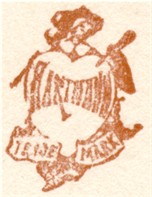 In
1897 ambiguous Post Office regulations were issued which said "... nothing
shall be written or otherwise impressed upon, or attached to any part of, that
side of a postal packet which bears the address at which the packet is to be
delivered ..." which, in effect, interfered with the duties of
the Post Office. This was originally interpreted as meaning that nothing could
be written on the address side of a postcard.
Frederick Hartmann was planning to
market postcards and came up with the idea of the divided back. It seems likely
that he sent some specimen cards to the Postmaster General to see if they would
be approved.
In
1897 ambiguous Post Office regulations were issued which said "... nothing
shall be written or otherwise impressed upon, or attached to any part of, that
side of a postal packet which bears the address at which the packet is to be
delivered ..." which, in effect, interfered with the duties of
the Post Office. This was originally interpreted as meaning that nothing could
be written on the address side of a postcard.
Frederick Hartmann was planning to
market postcards and came up with the idea of the divided back. It seems likely
that he sent some specimen cards to the Postmaster General to see if they would
be approved.
In January 1902 the Editor of Picture Postcard Magazine published a statement, at the request of the Postmaster General, which said that "... postcards may bear on the front, i.e. the address side, a continuation of the message, or the name and address of the sender, or even an advertisement, so long as such matter does not interfere in any way with the legibility of the address. Mr Hartmann soon had his cards, with their divided backs, on the market, and other card manufacturers rapidly followed. Initially this change did not apply to postcards sent overseas, and postcards printed at this time carry a suitable warning message.
The following examples show how different publishers initially interpreted the change.
Example 1 - St Peters Street, St Albans
An Early Hartmann Card
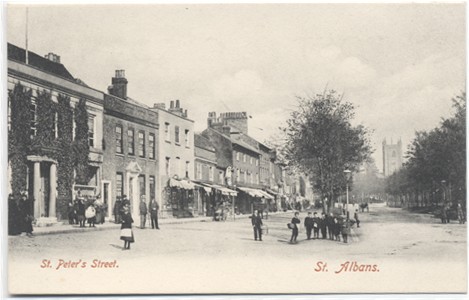 |
This attractive view of St Peter's Street, St Albans, is one of Hartmann's earliest cards and may well have been published in 1902 or shortly afterwards.
For INLAND Postage only this space may be used for communication
See Example 7 for what happened if a card with a message in the "Inland Postage only" message area was sent overseas |
|
|
|
Example 2 - Entrance, Ware Park
|
|
This card was published by G. Price & Son, The Library, Ware, and shows a feature that appears on some of the earlier divided back cards of the address space being bigger than the message space. This was posted in 1906 but may well have been printed any time after January 1902. For the British Isles only this space as well as the back may be used for correspondence. vide Post office Regulations. The card also issued in colour. The back printed in red with slightly wider area for the message and worded: For Inland Postage only This space may be used for correspondence (Post Office Regulations) |
|
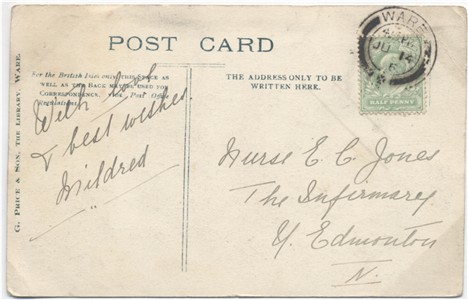 |
Example 3 - St Albans Abbey - Alter Screen
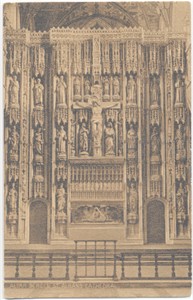 |
The opposite space may be used for Inland Communication (Post Office Regulations) Address only below |
|
The publisher of this card is not known, but the instructions have all been put on the address side - maximising the areas for the message. As there was now space for the message on the address side there was no longer need to leave space for a message on the picture side, and pictures expanded to fill the whole card. |
|
Example 4 - St Albans Abbey - with Coat of Arms
|
|
This card was produced by C. W. Faulkner & Co. is an early divided back card, which contains another clue about age - and the C W Faulkner only became a limited company in 1905. The picture and coat of arms were used in an earlier undivided back card (q.v.).
This side may have a message written upon it for POSTAGE IN THE BRITISH ISLES ONLY: the right hand side must be reserved for stamp and address.
|
|
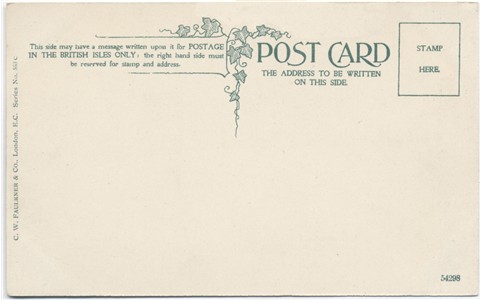 |
Example 5 - The writer takes control!
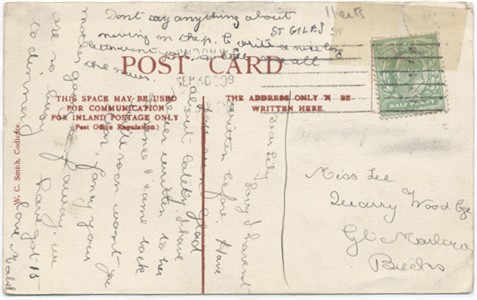 |
In this card, published by W. C. Smith of Codicote, the message area is comparatively small - and the writer has extended the area! The picture is of Codicote Church in about 1905 (q.v) |
Example 6 - Stamp Boxes
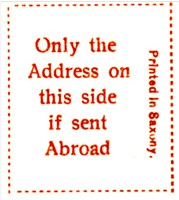 |
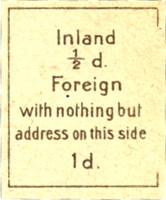 |
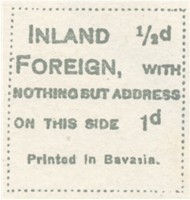 |
||
|
Information relating to the differences between inland and foreign use were included in the stamp box, which is obscured when the card has been posted - although the postmark may well give the date of posting. |
||||
Example 7 - Used Overseas in Error
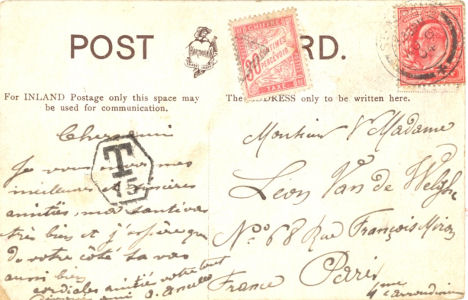 |
This Hartmann card was valid if used in England, but the divided back format was still not acceptable in France - who slapped on a "postage due" charge. |
| November 2012 | Example 7 added, plus some reformatting | |